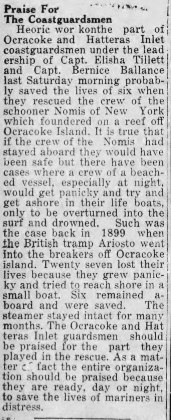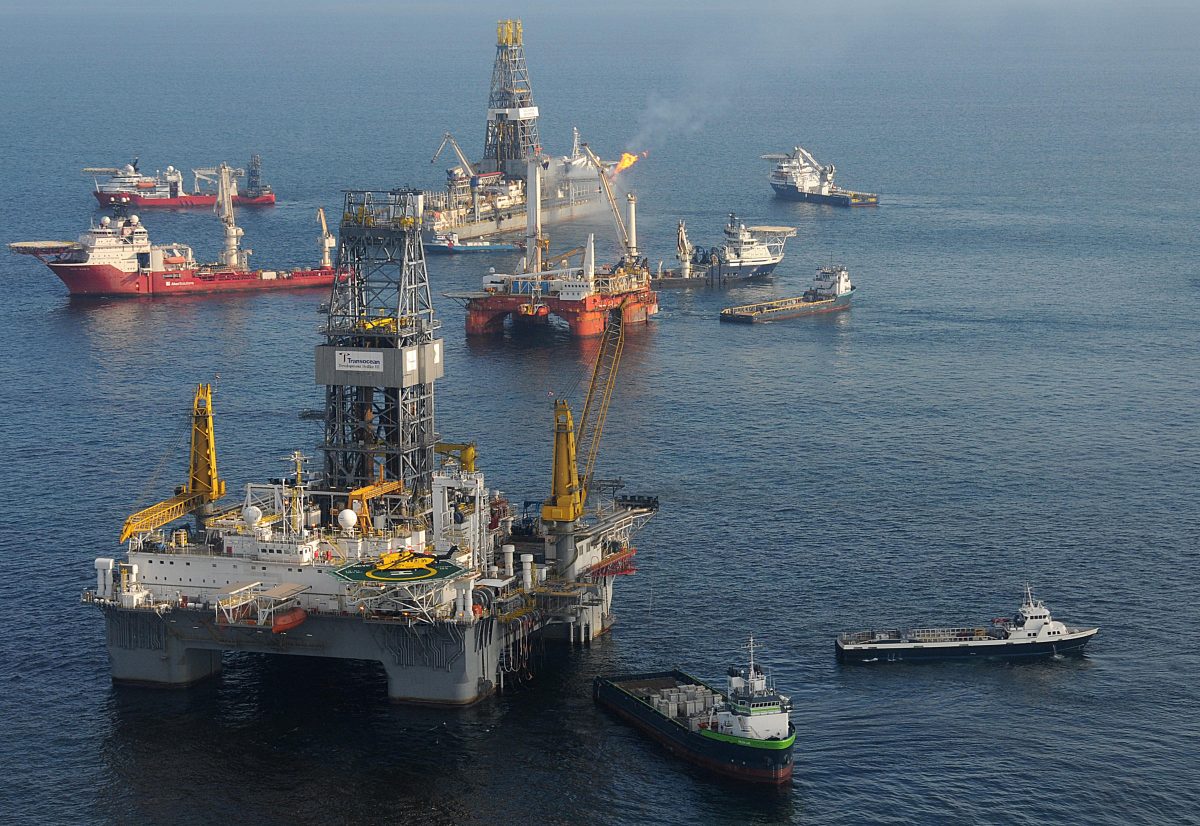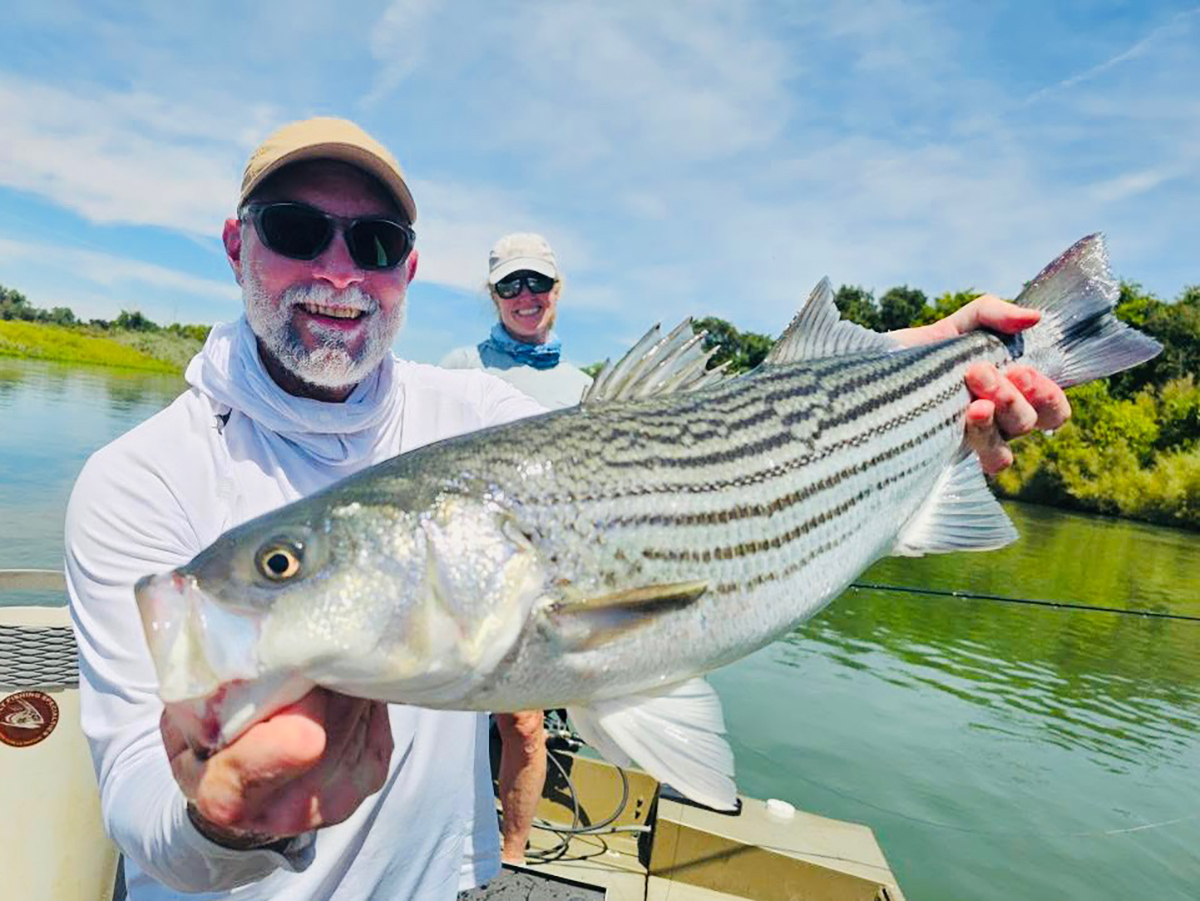
Coastal Review Online is featuring the work of North Carolina historian David Cecelski. Cecelski writes about the history, culture and politics of the North Carolina coast. Cecelski shares on his website essays and lectures he has written about the state’s coast as well as brings readers along on his search for the lost stories of our coastal past in the museums, libraries and archives he visits in the U.S. and across the globe.
This is a photograph of villagers on Ocracoke Island salvaging lumber from the shattered hull of the schooner Nomis in the summer of 1935. At the time of her grounding, the Nomis was carrying 338,000 feet of lumber from Georgetown, South Carolina, to New York City. She came ashore just north of the current location of the island’s pony pens.
Supporter Spotlight
Scenes like this had played out many, many times on the Outer Banks.
Built in Pensacola, Florida, in 1919, the Nomis was a schooner of 460 gross tons with three masts and the auxiliary power of twin, 4-cylinder Fairbanks-Morse oil engines.
The Age of Sail was waning, but in the early 20th century, U.S. shipyards continued to turn out “motor schooners” like the Nomis. Reliant on a combination of sail and engine power, they hauled lumber, coal, fertilizer and other bulk freight mainly on the East Coast of the U.S.
Master and owner of the Nomis, Charles C. Clausen, was 74 years old at the time of the wreck. He and his son, who sailed with him, were residents of Hempstead, New York, a town on Long Island. They mostly sailed on the East Seaboard of the U.S., but at least occasionally they visited Mexican seaports and possibly those in Central America as well.
Prior to the wreck, Capt. Clausen and the Nomis had known some hard times. At least twice in the previous three years, the U.S. Coast Guard had come to the vessel’s rescue: once off Cape Lookout and once off Martha’s Vineyard.
Supporter Spotlight
On the first occasion in 1932, the Nomis was caught in a severe gale on a run from Philadelphia to Charleston, South Carolina. The storm carried away her bowsprit and fore topmast and stove in her bow.
The Nomis was soon left “waterlogged and disabled,” one of her seamen, Edward Brownlee, later recalled. You can find his account in the J. Welles Henderson Archive and Library at the Independence Seaport Museum in Philadelphia.
At that time, a report said that only the cargo of lumber kept Nomis afloat.
The second incident was scarcely 10 months before her wreck on Ocracoke Island.
According to a report in the Newport Mercury in Newport, Rhode Island, a Coast Guard cutter came to the rescue of the Nomis when she was foundering 20 miles off Gay Head, the westernmost tip of Martha’s Vineyard. At the time, she was carrying a cargo of coal.
By the time the Coast Guard arrived, high winds had shredded the sails, much of her rigging was down and water was rising steadily in her hold. Coal dust had clogged her pumps.
Hauled into Vineyard Sound, the Nomis suffered more damage the next day when her anchor chain broke and she drifted onto a shoal. By the time the Coast Guard towed the Nomis into New Bedford, she had 5 feet of water in her hold.

The Nomis’s end came in a southeast storm a little after midnight on Aug. 16, 1935. As she sailed north, the schooner went aground hard on Ocracoke Island’s outer shoals, on a line with Six Mile Hammock.
Capt. Clausen quickly launched flares. Coast Guardsmen on both Hatteras Island and Ocracoke Island responded to the distress call.
Led by Capt. Bernice Balance of Hatteras and Capt. Elisha Tillet of Ocracoke, they affected a successful breeches buoy rescue.
Capt. Clausen, his son and the four other crewmen all made it off the vessel safely, and none too soon.
According to an AP news report, “Waves smashed the schooner’s hull, the bottom fell out and the keel came drifting ashore.”
For centuries on the Outer Banks, shipwrecks had meant loss and tragedy, as well as being occasions for daring rescues, a time of caring for survivors and often for burials, too.
But they had also been gifts from the sea. Over the generations, Ocracokers and other Outer Bankers had salvaged lumber from shipwrecks and built homes, shops and churches.
They had furnished cottages with mess tables and captain’s chairs, and they had re-purposed everything from ironwork to sailcloth.
In times of want and scarcity, which was most times, ships’ stores also ended up in the islanders’ pantries — kegs of molasses, boxes of bananas, barrels of pickled pork and much else.
At a vendue of the cargo on Sept. 6, 1935, the Nomis’s cargo of lumber must have gone for a song, since the schooner’s insurance agents and underwriters had no way of removing it from the island.
The Civilian Conservation Corps (CCC) bought some of the lumber. It was used to build a CCC work camp near where the National Park Service’s pony pen is today.
During the Great Depression, CCC laborers built four camps on the Outer Banks, including the one made out of the Nomis’s lumber. One of FDR’s New Deal programs, the CCC provided jobs for hundreds of out-of-work commercial fishermen and other islanders.
According to Ocracoke Island historian Philip Howard, two local brothers, James and Charlie Williams, also donated some of the Nomis’s lumber that they had salvaged to a new church meeting.
At that time, Ocracoke’s Church of God did not yet have a building. However, Miss Alice Austin, a Church of God evangelist from Buxton, on Hatteras Island, was holding prayer meetings on the island.
The little assembly met in the front yard of Elizabeth Styron, who was better known as “Aunt Bett,” Philip wrote in Ocracoke Island Journal, his insightful and always fascinating blog.
According to Philip’s story, the congregation used the Williams brothers’ lumber to build benches. That way they could sit and listen to Miss Austin preaching on Aunt Bett’s front porch.







